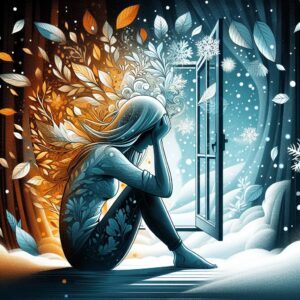
I’ve found that understanding light therapy begins with recognizing a fundamental human experience and the profound impact of light on our mood and well-being. Light therapy, an intervention designed to treat various depressive disorders, uses a specially designed light therapy box. This box emits an intense level of light, often measured around 10,000 lux, replicating the natural outdoor light that many of us miss out on, especially during the shorter days of winter.
Seasonal Affective Disorder (SAD), a type of depression that typically occurs during the winter months, is where light therapy has proven to be particularly valuable. The lack of sunlight in winter can disrupt your biological clock and lead to feelings of depression. Light therapy steps in to fill that gap, offering a gleam of relief by tricking the brain into believing the short, dark days are actually brighter and longer.
But it’s not only SAD sufferers who stand to benefit from this treatment. Research has shown that its rays reach far beyond, lending a helping hand to those dealing with non-seasonal depression and other mood-related issues. With its ability to provide a source of constant and controllable light, the therapy box has become a versatile tool in the arsenal against mood disorders.
What awaits is a deeper understanding of how this therapy works, far beneath the surface. The next section illuminates the science behind how light therapy can positively influence the brain’s inner workings and mood regulation processes. It’s fascinating to see how light, the most natural of elements, serves as a potent ally against the darkness of depression.
Does Light Therapy Actually Work For Depression?
Understanding the biochemical effects of light therapy unlocks why it’s been a game changer for some individuals grappling with depression. This non-invasive treatment hinges on a simple premise: exposing the brain to a specific kind of light can catalyze a chemical uplift. When light therapy is discussed, the concept of neurotransmitters often comes up. Serotonin, a mood regulator, and melatonin, which controls sleep cycles, are influenced by light exposure. This is critical for people with Seasonal Affective Disorder, where a decrease in sunlight during winter months may dampen serotonin levels and disrupt normal sleep.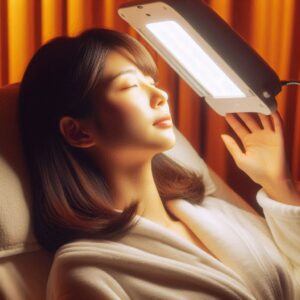
Delving into the therapeutic process, we see that, much like a plant converting sunlight into energy, our bodies have an astounding ability to translate light into better mood and sleep. Morning light exposure is especially potent. It aids in resetting our internal clock, leading to more regular sleep patterns and mood improvements. While it sounds futuristic, the concept is grounded in well-established science.
Evidence supporting the clinical effectiveness of light therapy continues to grow, painting a bright picture of its potential. Research consistently shows that the right dosage of light can spur positivity, energy, and wellness. Trials have indicated that, for individuals with SAD, consistent light therapy sessions correlate with reduced depressive symptoms. This isn’t anecdotal; these findings come from carefully controlled studies aimed at determining the true impact of light therapy.
As promising as these outcomes are, it’s pivotal to temper expectations. Light therapy isn’t a one-size-fits-all solution—results can vary. But therein lies the beauty of this treatment: it can be tailored and adjusted to fit individual needs and schedules, all while being a low-risk addition to existing therapeutic practices.
LIGHT THERAPY LAMPS: Unleash Your Sunshine! Light Therapy’s Proven Power to Fight Depression
How Long To Do Light Therapy For Depression?
Establishing a daily light therapy ritual can be crucial for reaping the full benefits of this treatment. Typically, sessions are held for about 20 to 30 minutes each day, with the morning being the most effective time. This timing seeks to replicate the energizing effects of the sunrise and set a positive tone for the day ahead. It’s important to note that timing may vary based on personal schedules and a healthcare professional’s recommendation.
A pivotal factor in the safe application of light therapy is the quality of the light being used. The lightbox utilized must filter out UV rays to prevent skin damage akin to the harm caused by prolonged sun exposure. As for the setup, maintaining a comfortable distance where the light is indirect yet pervasive minimizes the risk of eye strain and enhances the overall comfort of the session.
While light therapy stands as a powerful tool on its own, integrating it with other treatments can potentially amplify the outcomes. For instance, cognitive-behavioral therapy (CBT) or certain medications can be concurrently administered, leveraging the strengths of multiple approaches. Changes in lifestyle, such as increased physical activity and a healthier diet, should also be part of a comprehensive plan.
RESPONSIBLE PRACTICE is what makes any therapeutic strategy thrive. For light therapy, this entails establishing a consistent routine and adhering to usage guidelines. It’s also worth consulting a professional before embarking on light therapy, especially if existing conditions like eye diseases or photosensitivity are present.
Glowing Reviews and Precautions: The Clinical Spectrum of Light Therapy
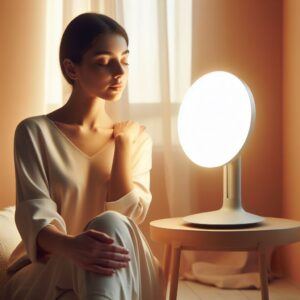
Countless people welcome the benefits light therapy brings, especially when the skies turn grey, and the winter blues set in. But what about the bigger picture? Beyond personal anecdotes, clinical studies solidify light therapy’s standing as a powerful tool against Seasonal Affective Disorder (SAD). It reveals a flicker of hope for those with non-seasonal depression, sleep disorders, and some other mood-related conditions.
However, like any treatment, it’s crucial to walk into light therapy with open eyes. Mild headaches or eye strain have been reported, though they typically fade as the body adjusts or with a simple tweak in the light box’s positioning. Being clued up about these potential side effects means you can manage them effectively, should they arise.
Before I shine a light on the finish line, I must underscore the importance of dialogue with a healthcare provider. This is non-negotiable, particularly for those with pre-existing eye conditions or light sensitivities. Safe practice is key to ensuring the light that ushers in relief doesn’t cast a shadow elsewhere.
To draw one last highlight, light therapy isn’t a lone soldier on the battlefield against depression. Its potency often multiplies when part of a battalion that includes cognitive behavioral therapy, medication, and lifestyle shifts. The light therapy journey is as unique as the individual, tailored to personal needs, hand in hand with professional guidance, and driven by the user’s commitment to brighter days.
With its growing acceptance and versatility, light therapy represents a promising avenue for treating various mood-related conditions. The ongoing research from reputable institutions like the Mayo Clinic, Healthline, Harvard Health, and the National Institutes of Health (NIH) underscores its potential to improve the quality of life for those struggling with depression and related disorders.

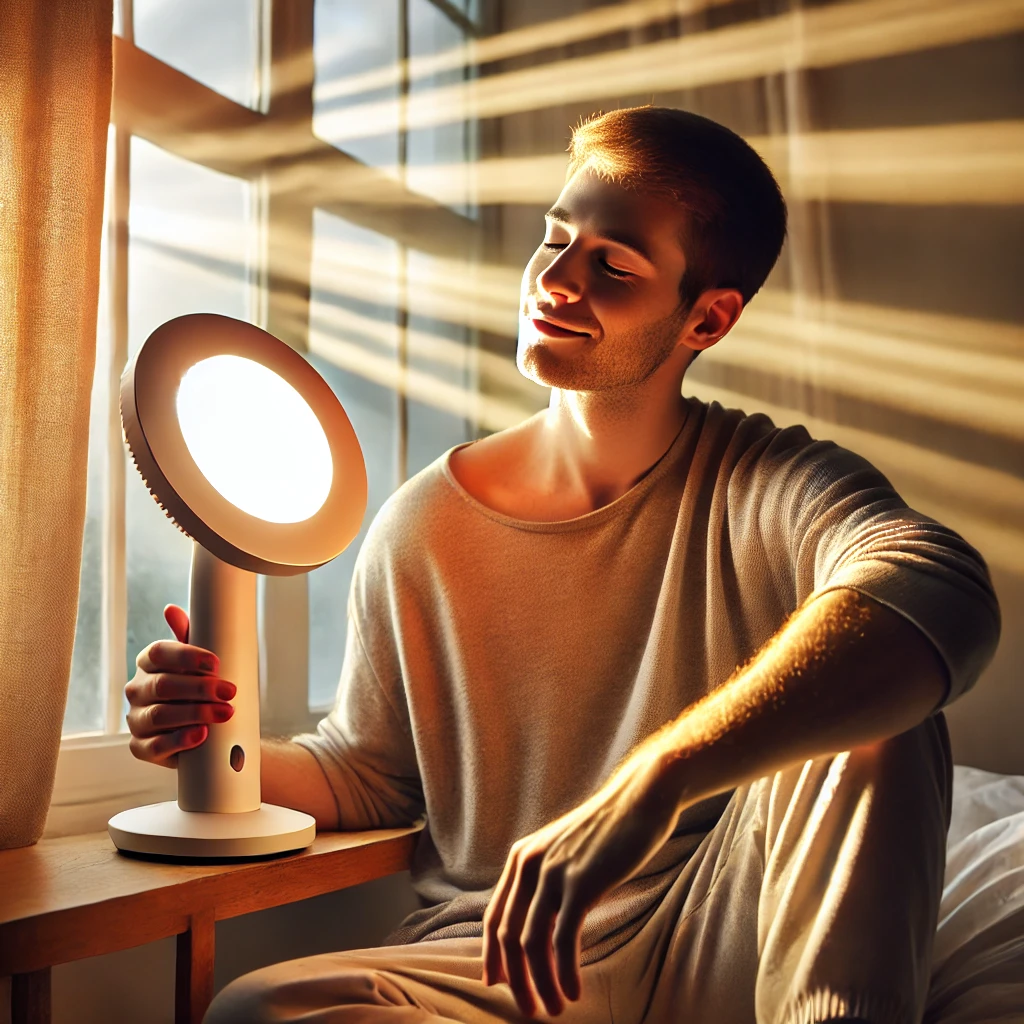
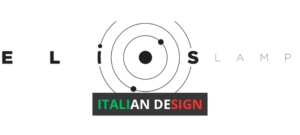
Anybody suffering from depression, will know how debilitating it can be. Many depression sufferers end up using prescription drugs, which is not good for the body to be used in the long term. Using a natural product, or finding non-invasive solutions, are therefore much better.
So it is great to see that light therapy can be used to treat depression. It is very interesting that it is specially light in the morning, that is beneficial for those suffering from SAD. As more research is done on the benefits of light therapy to treat depression, it will hopefully also be used for other mental health disorders.
Thank you so much for your thoughtful comment! You’re absolutely right—depression can be incredibly challenging, and finding effective treatments is crucial for those affected. Many people are understandably concerned about the long-term use of prescription drugs, so exploring natural and non-invasive options like light therapy is a promising alternative.
Light therapy, particularly exposure to morning light, has shown significant benefits for those with Seasonal Affective Disorder (SAD) and other forms of depression. The therapeutic effects of light therapy are gaining more recognition, and ongoing research continues to uncover its potential benefits for various mental health disorders.
We’re glad to see your interest in this topic and hope our information on light therapy can provide some valuable insights. Feel free to explore more on our website, and don’t hesitate to reach out with any further questions or experiences you’d like to share. Thank you for being part of our community at Wellness Wealth Connect!
Best regards,
The Wellness Wealth Connect Team